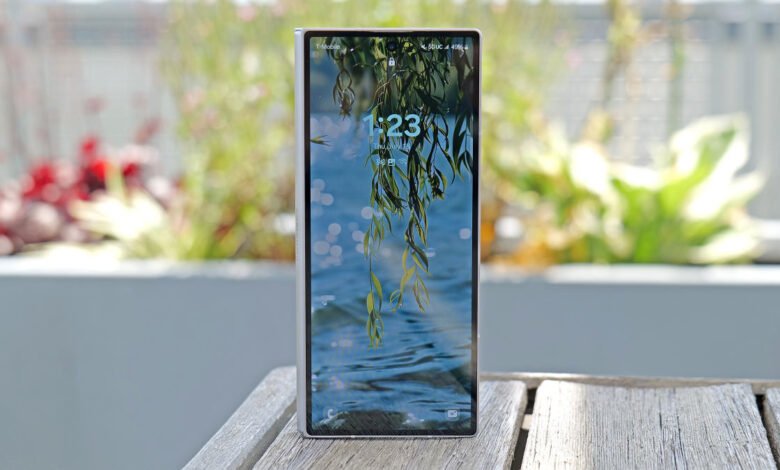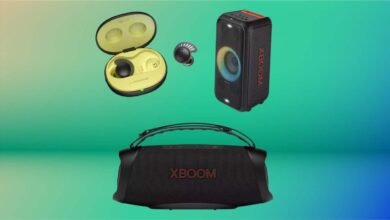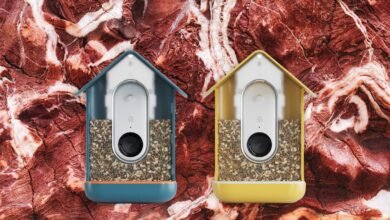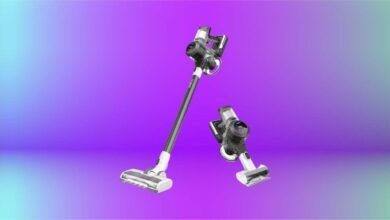The king, but for how much longer?

No one has been making foldable phones longer than Samsung. And for the first few years, the sheer number of improvements we got on the Galaxy Z Fold line meant it didn’t really have any competition. But more recently, the pace of innovation has slowed while new challengers like the OnePlus Open and Pixel Fold have arrived. Now for 2024, Samsung has reinforced the Galaxy Z Fold 6 with a stronger but significantly lighter frame, a new ultra-wide-angle camera and a bunch of AI-powered tools. Unfortunately, not much else has changed, leaving us with a very iterative upgrade. So while the Galaxy Z Fold 6 remains the best all-around big foldable on the market, it feels like complacency is eroding Samsung’s lead among flagship flexible phones.
Photo by Sam Rutherford/Engadget
Even without a new main camera, Samsung’s Galaxy Z Fold’s sleeker design, brighter screens and native stylus support are enough to maintain its rank as the best big foldable phone on the market.
- Super bright and colorful display
- Even lighter chassis
- Great battery life
- Native stylus support
- Even more expensive than before
- Same main camera as the previous two Z Folds
- S Pen not included
- Charging speeds could be faster
$1,900 at Samsung
Design and displays: Tweaked dimensions with even brighter screens
After eliminating the gap between the screen (when closed) on last year’s phone, Samsung has adjusted the Galaxy Z Fold 6’s dimensions again for 2024. But the changes are so small you have to measure them in millimeters. When closed, the phone is just over one millimeter thinner and when you open it up (in portrait), the main screen is 2.7mm wider but one millimeter shorter. It’s not a ton, but you do get a little more room for activities. And of course this also affects the exterior Cover Display, which is about 1mm wider as well — just enough to make using its on-screen keyboard more forgiving.
Elsewhere, the entire phone is sharper, from its boxier edges to the more squared-off corners on both screens. Samsung also says the Enhanced Armor Aluminium used in the Z Fold 6’s chassis is about 10 percent stronger than before, but I hope you’ll forgive me for not dropping it on purpose just to find out. Holding everything together is a new dual-rail hinge. And this time, I think Samsung has nailed the perfect balance between something that’s easy to open but also holds its position when you want it to. But the biggest design upgrade is a 14-gram weight reduction compared to the previous model. Granted, that might not sound like much, but now the Z Fold 6 only weighs around 4 grams more than its non-foldable cousin, the S24 Ultra. And on an already heavy phone, this change makes a big difference.
As for the displays, as someone who’s been using the Pixel Fold a lot recently — which has a solid screen in its own right — can I just say, Samsung’s panels are so choice. Not only has peak brightness improved to 2,600 nits for both displays just like on the standard S24 family, Samsung has subtly shrunk and flattened the bezels, so the phone looks even more like a magazine come to life. And until I see something better, this is simply the best screen on a big foldable right now.
Performance: Expectedly speedy
The Z Fold line has never been slow and this year we got the same upgrade to a Snapdragon 8 Gen 3 chip as we saw on the S24, while base RAM is staying pat at 12GB. And as you’d expect, the Z Fold 6’s performance is fast and responsive. There’s no lag when doing pretty much anything and thanks to the addition of a larger vapor chamber on the inside, the phone stays cooler during longer sessions, which is a nice bonus to all the gamers out there who like playing on a truly big-screen device.
Cameras: Mostly unchanged
When it comes to photography, I’m a bit disappointed with the Z Fold 6, not because it can’t take a decent pic, but because I know Samsung can do better. For this go around, Samsung has stuck with a trio of rear cameras, opting for a new 12-MP sensor for the ultra-wide lens — and it’s pretty good. But at the same time, the ultra-wide lens is the one I use the least in daily use, and it’s not close.
The other two cameras – the 50-MP main and 12-MP telephoto with a 3x optical zoom — are solid, but they’re the same ones Samsung used on at least the previous two generations. In a photo of some strawberries, the Z Fold 6 produced a delicious pic with deep saturated hues and great details. At the same time, though, you can also see the slightly exaggerated warm tones you often get from Samsung cameras. And at night, the Z Fold produced a beautiful pic of a flower in a very tricky backlit environment.
The issue is that after Google released the Pixel Fold, Samsung doesn’t really have an excuse for saddling the Z Fold 6 with downgraded photography when compared to the S24 Ultra. The Pixel Fold has a longer 5x optical zoom and an edge in overall photo quality. Just take a look at two zoom shots taken by the Z Fold 6 and the Pixel Fold. In a vacuum, Samsung’s photo doesn’t look bad. But then take a look at the Pixel’s image. It’s noticeably sharper and more detailed.
And it’s the same thing in really low-light situations, like the one I took of some Bluey figurines, where the Pixel Fold captured a less grainy, sharper and more well-exposed pic. And after being pleasantly surprised with the cameras on the S24 Ultra, it’s a shame Samsung’s most expensive phone sits in second place when it comes to photography.
AI features: Fun and occasionally handy, but not essential
As we saw back at the beginning of the year, Samsung has brought the Galaxy AI suite it launched on the S24 to the Z Fold 6. And by and large, a lot of the features are the same including things like Chat Assist which you can use to generate social posts or emails while selecting a variety of tones. There’s also support for Google’s Circle to Search along with translation and summarization tools. A couple new tweaks for the Fold is that now the phone can translate text in place instead of spitting it out into a big unformatted blob, which is nice but kind of situational. And I should mention, Google Lens already offers similar functionality. Perhaps the more important one is the ability to do dual-screen translations, so each person can see text in their language in real-time, depending on what side of the phone they’re looking at.
Some new additions are the Portrait Studio tool that can create an AI-generated drawing of someone based on a photo and a range of styles like comic or watercolor. It’s fun and it’s good for a laugh or two, but I’m not sure how useful it will be on a regular basis. There’s also the Sketch to Image feature that allows you to add a simple drawing to an existing photo and then have the phone generate a more realistic rendition of it in your final image. I still think Samsung’s basic AI photo editing tools are the most useful of the bunch, as they make it easy to delete distracting objects or do simple touch ups. But once again, all of this feels more like bonus content rather than core essentials.
Battery life: Great longevity but could use some faster charging tech
While Samsung didn’t increase the size of the 4,400 mAh cell in the Z Fold 6, the phone does have slightly better battery life due to improved energy efficiency from its new chip. On our video rundown test, it lasted 20 hours and seven minutes when using its large main screen and 25 hours and 19 minutes when using its exterior cover display. That first number is even better than we saw from the Pixel Fold (15:22) and OnePlus Open (19:19), so if you need a big-screen phone with ample longevity, the Z Fold 6 is the easy pick.
Unfortunately, its charging hasn’t changed much. You still get 25-watt wired charging and 15-watt wireless charging, which are both pretty mediocre figures in 2024. And while I wasn’t expecting to see support for Qi2 magnetic charging on the Z Fold 6 after Samsung opted not to add it to the main S24 line, I’m still a bit miffed that a phone this expensive is cutting important features off the spec sheet.
Wrap-up
It wasn’t long ago when practically every component on the Z Fold line was unmatched by its competitors. But now phones like the Pixel Fold exist, which offers better overall photography. Then there’s the OnePlus Open, which weighs the same as the Z Fold 6 even after its recent diet. And let’s not forget, both of those rivals are 2023 models. Plus there are Chinese competitors like the Honor Magic V3 and the upcoming Xiaomi Mix Fold 4, which are both thinner and lighter than Samsung’s champion.
Don’t get me wrong, the Galaxy Z Fold 6 is still a good foldable, a great one even. It’s got excellent performance, strong battery life and handy features like native stylus support. But it feels like after all this time sitting fat and happy on its throne, Samsung has a diminished hunger for total domination. Instead of long-awaited features like a built-in S Pen or an improved under-display camera, we got a bunch of AI-powered tools and tricks, which are fun but not true highlight attractions. And at $1,900 — which is $100 more than last year — the Galaxy Z Fold 6 is the most expensive it’s been since the Z Fold 3. But I guess that’s the price you pay Samsung for having such a long reign on top.
Source link




